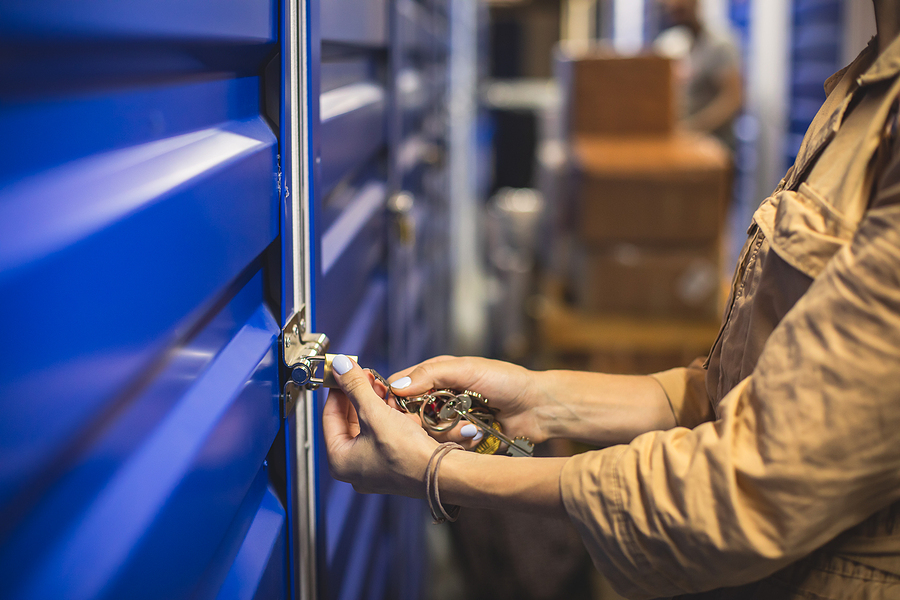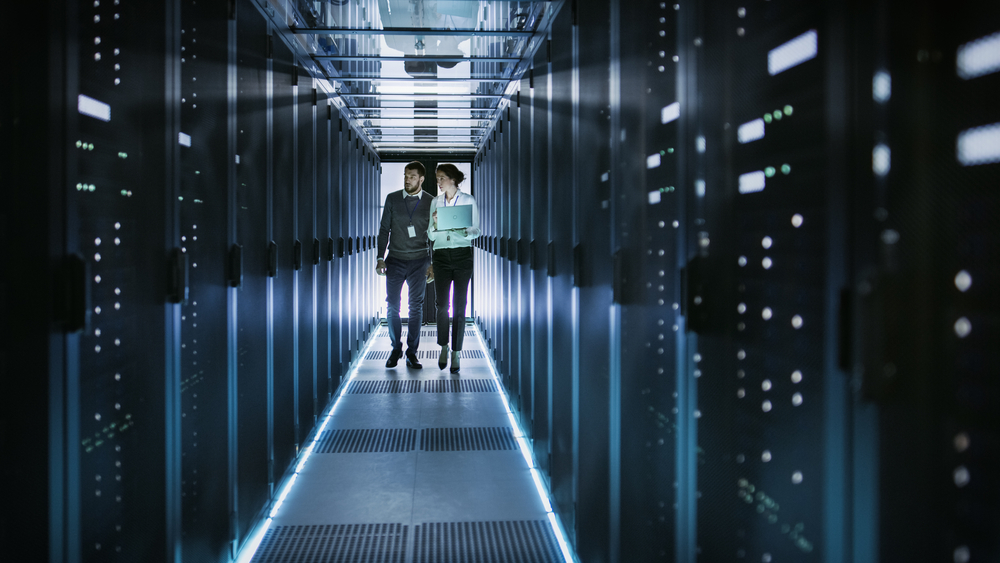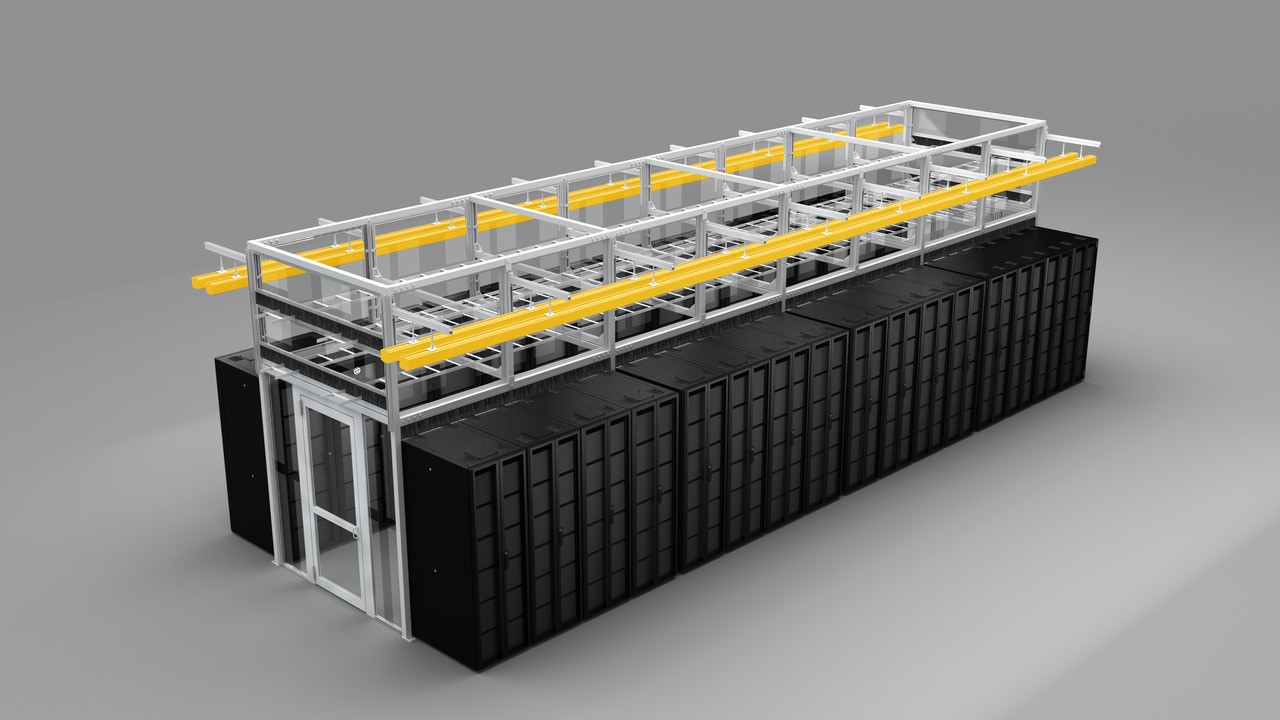IT
Cloud
IT
Backblaze and CTERA provide distributed cloud file storage solution
Backblaze and CTERA have announced a partnership to make life easier for IT admins challenged by on-premises file server and NAS management in an age of rapidly expanding remote workforces and global collaboration.
The Backblaze and CTERA partnership provides a modern, all-in-one, cloud file storage solution that extends and expands the capabilities of traditional NAS and file servers in the cloud, freeing IT teams to do more with the resources typically reserved for troubleshooting or replacing on-premises hardware.
“We’re seeing a massive shift from traditional NAS to cloud NAS, from edge to core access, as organisations evolve and expand,” says Oded Nagel, Chief Strategy Officer of CTERA. “CTERA is committed to providing the widest choice of cloud to our customers. The Backblaze-CTERA partnership establishes a compelling, new, cost-effective storage option for companies that wish to tier their data to the cloud for redundancy and collaboration.”
The partnership combines CTERA’s Enterprise File Services Platform for distributed cloud file services on top of Backblaze B2’s object storage to deliver a cloud-based global file system, allowing IT admins to:
Expand the capacity of existing on-premises infrastructureRetire legacy file servers and NAS devices altogetherEmpower remote workforces and multi-site collaborationEstablish resilient disaster recovery and business continuity plansBack up data distributed globally in one centralised store, while maintaining instant (via CTERA’s Edge Filers) and reliable access (via Backblaze’s 99.9% uptime SLA)Optimise budget with pay-as-you-go cloud storage pricing ¼ the price of equivalent offerings.
"If you're tired of buying new equipment every three years, replacing hard drives, paying for maintenance, or power, or space in a data centre, and all of the headaches of managing remote user access," comments Nilay Patel VP of Sales at Backblaze, "then the CTERA and Backblaze partnership is perfect for you. The setup is incredibly easy, and the immediate budget and staffing relief will give you resources to tackle new opportunities. You'll never have to (or want to) upgrade your NAS again."
Beatrice - 31 March 2022
Data Centres
IT
Lenovo delivers future-ready IT infrastructure for midsize companies
Lenovo has introduced newly customised IT infrastructure solutions for midsize businesses, with a complete series of easy-to-use solutions and services to help them achieve intelligent transformation and grow their business. Designed to help growing businesses, the suite of edge-to-cloud flexible IT infrastructure solutions includes new server, storage and service offerings that help organisations easily overcome resource limitations, optimise for remote work and accelerate innovation.
Midsize businesses make up the majority of the worldwide economy and workforce, with 70% projected by IDC to significantly increase their IT spend by 2026. As digital transformation continues to accelerate globally, growing businesses must be able to quickly adapt to ever-changing market demands, achieve faster deployment, seamlessly manage resources and reduce security risks. Today, many organisations face limitations in IT staffing, skills and funding, creating barriers to infrastructure transformation. Lenovo’s new purpose-built cloud and on-prem server-based solutions provide reliable infrastructure and proven expertise that improves workforce productivity and allows businesses to start small, remain competitive and grow.
“As the global digital transformation continues, the right IT infrastructure and services are at the heart of every business, unlocking intelligence that expands opportunities and fuels growth,” says Kamran Amini, Vice President and General Manager of Server & Storage, Lenovo Infrastructure Solutions Group. “Working with our broad system of channel partners and solution providers, Lenovo’s new IT infrastructure solutions and TruScale services for midsize businesses are optimised to help organisations improve customer service, accelerate sales and roll out next-generation applications so they can grow their business now and well into the future.”
Future-ready transformation with flexible IT
Leveraging Lenovo’s optimised servers, storage and services, companies can unlock more value and accelerate growth with remote work and hybrid cloud solutions. Lenovo’s expanded portfolio features new single-socket ThinkSystem V2 Servers, newly enhanced Lenovo TruScale Infinite Storage and a range of award-winning services.
With robust reliability, the new ThinkSystem V2 servers provide a flexible, energy efficient and low-noise solution for constrained spaces inside and outside the data centre. The new single-socket ThinkSystem ST50 V2, ST250 V2 and the SR250 V2 servers offer companies simple solutions that are easily tailored for running their business, including support for business-critical applications in retail, manufacturing and financial services. In combination with ThinkSystem servers, the Lenovo ThinkSystem DM5100F storage system is an award-winning affordable, feature-rich all-flash SAN storage solution that adapts to new workloads over time, allowing businesses to start small and grow, as well as manage data from the edge to the cloud.
“As Lenovo services handles our infrastructure management, we now devote more resources to building new digital services for clients,” says Pedro Ramirez, CEO of STGT. “With Lenovo TruScale Infrastructure Services, we are becoming a more agile company, delivering higher quality services to clients while significantly reducing our costs. In the years ahead, the Lenovo solution will help us to achieve sustainable growth.”
Management made easy
Lenovo helps customers efficiently and simply manage their data and infrastructure solutions, using the built-in Lenovo XClarity management software. With Lenovo XClarity, companies have an easy-to-use dashboard that can standardise, simplify and automate IT management tasks, enabling systems to be configured in as little as three minutes and preventing up to 90% of service calls.
For companies that have remote and branch offices, enabling remote work is challenging. Lenovo TruScale for Hosted Desktops enables remote workers to be productive with enhanced security from anywhere. To make it even easier, Lenovo offers Professional Services Tokens, which can be purchased for hourly increments of IT technical expertise and service support.
Enhanced recovery and protection
Historically, 43% of cyber attacks target small and midsize businesses. Of those that experience a security breach or cyber attack, nearly 60% go out of business. Lenovo’s solutions for business continuity help reduce the risk of downtime. Lenovo offers ThinkSystem V2 servers with ThinkShield Security and award-winning ThinkSystem DM storage solutions with built-in automatic ransomware protection. For example, with Lenovo’s backup and recovery solution, businesses can help better protect themselves from security risks, data loss and unforeseen disruptions.
As the digital evolution continues, growing businesses have an opportunity to ready their IT infrastructure for the future so they can be more competitive today and tomorrow. Working with the industry’s most trusted global channel partners, Lenovo offers easy-to-use infrastructure solutions for growing businesses. From affordability and flexibility to global delivery and support, Lenovo solutions improve productivity and promote new ways to work in an evolving business world.
Carly Weller - 9 March 2022
IT
Security
Involta recognised on CRN’s 2022 MSP 500 List as a top security provider
Involta is pleased to announce that CRN has named the company on its Managed Service Provider (MSP) 500 list in the Security 100 category for 2022. This highly regarded list recognises leading service providers across North America for their forward-thinking approaches coupled with their dedication to the IT channel.
As pandemic and cloud-driven security concerns continue to move to the forefront, this list signifies the expertise needed to safeguard critical data, infrastructure and networks. According to Statista, 64% of organizations worldwide were most likely to experience a data breach as a result of COVID-19. In addition, ransomware attacks have skyrocketed in costs, requiring enterprises to integrate new security approaches. Cybersecurity Ventures estimates ransomware costs are expected to reach $265 Billion by 2031.
"Today's enterprises are facing an unprecedented number and variety of sophisticated cyber threats with an ever-expanding attack surface," says Jim Buie, President of Involta. "Being named to this list represents Involta's commitment to helping our clients protect their organization".
As a designee of the Security 100, Involta has proven its ability to successfully deploy and integrate today’s most progressive off-premises and cloud-based security services. These services include Involta Secure, a multilayer suite of security services that its dedicated security team uses to neutralise threats before impacting critical assets or operations. In addition, Involta has made significant investments into boosting its security-focused channel partnerships with leaders in the space such as Alert Logic, Pure Storage, Veeam and VMware.
“In addition to having to adjust their own business operations to account for the changed conditions during the pandemic, MSPs have also seen increased demand for their managed communications, collaboration and security services,” comments Blaine Raddon, CEO of The Channel Company. “The solution providers on our 2022 MSP 500 list deserve credit for their innovative and game-changing approaches to managed services in these unpredictable times, as well as their ability to optimize operational efficiencies and systems without straining IT budgets.”
Beatrice - 3 March 2022
Cloud
Data Centres
IT
Product
Node4 launches market-first managed Azure Hybrid Cloud solution
Node4 has announced the launch of its new Managed Azure Hybrid Cloud solution. The new offering is possible because of Node4’s significant and sustained data centre investment — and was developed with technical input from Microsoft, Intel and Lenovo. The result is a revolutionary managed service offering that addresses the complexity, compliance, latency, and legacy technology challenges faced by businesses when migrating to a hybrid IT environment.
Node4’s Managed Azure Hybrid Cloud solution delivers five key benefits. It allows customers to:
Create their own Azure region in a Node4 data centre on dedicated infrastructure with similar APIs and multiple PaaS services. Use the same skills and tools to maintain consistency across the data centre and the Azure environment.Access cost-effective, high-performance Azure infrastructure via one of Node4’s data centres for performance-sensitive databases and workloads. Strengthen their business continuity proposition with logical separation and operator diversity.Unlock Azure benefits, including free security updates for EoL, Windows, and SQL Server versions across the hybrid environment.
The solution, which utilises Microsoft Azure Stack HCI and Microsoft Azure Arc, is hosted in Node4’s state-of-the-art data centres. The offering also includes hot-node scalability — allowing customers to scale on demand without the long lead times often associated with hybrid infrastructure expansion. Node4 has achieved this industry-first by investing upfront in additional nodes within its data centres. This enables the company to deliver the first truly scalable, agile, and flexible Azure-based hybrid offering as a managed service.
Andrew Slater, Technology Practice Director - Cloud at Node4, says: “Our new Managed Azure Hybrid Cloud solution is a logical, intuitive offering. It allows businesses to migrate substantially more of their legacy infrastructure into an Azure environment without the challenges that often frustrate their digital transformation process. We predict many organisations will use the solution as a stepping-stone while migrating legacy VM environments to Azure. Others, with precise performance or data sovereignty needs, will maintain it as a long-term infrastructure component.”
Node4’s Managed Azure Hybrid Cloud solution introduces modern Azure tooling across the entire hybrid environment. This includes Site Recovery, Backup, Update Management, File Sync, Monitor and Security Center. Furthermore, because it’s a managed service, Node4 handles all the Azure infrastructure setup and configuration — and maintains the hardware in its data centre. Customers simply select the servers, support package, architecture, and stack environment that are right for them. Then, using the Node4-developed Azure Landing Zone, they can quickly and easily configure a hybrid network architecture that meets Microsoft’s best practice guidelines. This, in turn, ensures hybrid environments reach maturity and full functionality at a much faster pace.
A Managed Azure Hybrid Cloud with general purpose nodes starts at £5000 per month. This includes a three-node Azure Stack HCI cluster (n+1) with an ExpressRoute Circuit and Azure Landing Zone support — the cluster is built using the latest compute and storage technologies, optimised for performance.
Apay Obang-Oyway, Territory Channel Sales Lead, Microsoft UK, concludes: “We congratulate Node4 on the launch of its Managed Azure Hybrid Cloud solution. This is an incredibly exciting new chapter for the business and the result of our extremely close ongoing working relationship. The solution’s ability to extend Azure functionality into hybrid environments and guide businesses at each stage of their digital transformation journey is ground-breaking. This kind of outside-the-box thinking demonstrates Node4’s steadfast commitment to helping businesses reap the full benefits of the Azure platform — and contributed to Node4 earning Microsoft Azure Expert MSP status.”
Beatrice - 22 February 2022
Data Centres
IT
Designing data centres for MSPs and IT service providers
This piece from Amy Young, Sales Director at Custodian Data Centres, dives into the post-pandemic business landscape and how it’s critical for MSPs and ISPs to choose the right data centre partner to support growth.
Since the start of the pandemic, the Managed Service Provider (MSP) and IT Service Provider marketplace have radically changed. As the post-pandemic business landscape begins to take shape, it’s critical for MSPs and ISPs to choose the right data centre partner to support growth.
As many businesses begin to re-draw their digital transformation roadmaps in the wake of COVID-19, today’s end-users are looking to evolve how they structure their IT services, and more critically, streamline whom they buy these services from.
For the MSPs and ISPs
responsible for such digital strategies, agile, resilient and secure data
centre capacity is crucial – especially for those delivering disaster recovery,
business continuity and cloud services. Here, the role of the data centre
operator is, in many respects, simple but critical. Their primary requirement
is to deliver power, cooling, connectivity, and secure physical infrastructure
to support MSP service delivery.
Challenges in the face of digital transformation
In recent years much has
changed. MSPs and ISPs are faced with a host of challenges, including the need
to keep pace with the speed of constant technological change. There’s also a
highly competitive marketplace to contend with, where often vendors and other
service providers, even those that a business is partnered with, can compete on
the same tenders.
Other challenges include the
need for greater resilience of the IT facet and thereby increased levels of due
diligence, where customers will want to see their whitespace before signing
contractual agreements. Finally, with accelerated digital transformation, there
is a need to future proof while meeting strict SLAs regarding data, security,
and uptime.
The role of the data centre
operator has, therefore, become even more critical for MSPs and ISPs planning
to scale and grow. And with more end-users now looking to their external
suppliers as trusted advisors, in-house technical
expertise, agile critical infrastructure and dynamic service have become key
differentiators for those providers in the channel.
Digital architectures are changing
According to research from Accenture, over three-quarters (77%) of executives state that their technology architecture is becoming critical to the overall success of their organisation.
One key area of growth for all MSPs is digital security, and research from Datto into the impact COVID-19 found 84% of MSPs report advanced endpoint security, data loss protection (79%) and password management policies (72%) as the most requested services by their customers. Having a partner that specialises in state-of-the-art physical infrastructure and security is vital for MSPs, and will likely form a major component of their services, especially those around zero trust approaches to data security.
Research from Gartner also states that by 2025, 85% of infrastructure strategies will integrate on-premises, colocation, cloud and edge delivery options, compared with 20% in 2020. This dramatic shift in IT infrastructure is redefining how MSPs are delivering end-user services.
Mission-critical IT, whether deployed
on-premises, hosted in a colo, or indeed at the edge of the network is,
therefore, paramount for end-user digital transformation. Now, as more MSPs and IT Service Providers are called upon to
expand their service portfolios with capacity for AI, machine learning and edge
infrastructure, all of which require integration with cloud services, the
support of specialist colocation providers have become vital. But what are the
considerations for choosing a colo?
Key considerations for outsourcing
As with any service provider,
cost is a key aspect of the decision-making process. MSPs cannot, however, put
a price on reputation, so reliability, connectivity, security, and efficiency
all play important factors. Efficiency, especially in the form of power usage,
can be critical, and the more energy efficient a data centre provider can be,
the lower the total cost of ownership (TCO) for the user. A data centre
provider with a lower PUE can provide a cost-effective and scalable platform to
support MSP growth, something highly appealing where cost and consolidation are
influential.
Diverse connectivity and low
latency are also determining factors, and MSPs will often seek out
carrier-neutral colocation providers who have access to dark fibre rings, 100Gb
wavelengths, and who can deliver enterprise-level connectivity solutions. Many
end-users are moving towards hybrid IT environments with a mix of on-premise
infrastructure and cloud, so real-time access to data and application
availability are indeed business-critical.
Size, in terms of scalability,
alongside physical security and customer experience, are also crucial. Many
MSPs are looking to partner with operators that have a demonstrable track
record in supporting their key customer demographics. Further, with human
error, network, and power failures key causes of outages there is also a need
to meet strict compliance and regulatory standards, and to provide policies for
zero downtime. For any service provider, it pays to have a data centre partner
who can consistently meet strict SLAs.
Finally, speed of deployment and
dynamic service is crucial. Any Managed Service or IT Service Provider will
tell you that adding value, or having the ability to go the extra mile, can be
the very difference between a customer renewing their service agreement or
migrating to another provider. The trust that a data centre operator can act as
an extension of your team, can understand complex infrastructure deployments,
or who can meet strict timescales, especially where speed of installation,
security and operational reliability are concerned.
The need for new partnerships
As the business landscape
continues to change, so have the ways in which data centres are looking to
support the MSP and ISP communities. Cost predictability is always a key
factor, but so too are the pressing needs to consider technical competence,
alongside environmental factors - especially as sustainability moves to the top
of the business agenda.
In the wake of COVID-19, MSPs are looking to their data centre providers as trusted advisors, and often, as an extension of their technical or sales teams. The right operator can help an MSP win business, answer complex technical questions, and instil confidence in the end-user at every stage of the journey.
Further, transactional
relationships have become a thing of the past, and long-term collaboration has
become a focal point of business discussions. As such, many MSPs are looking
for providers that can support their growth across different geographical
regions and can continue to do so in a low cost and environmentally sustainable
way.
Finally, trust and transparency are vital,
especially in a channel where tenders are often taken in-house, and where
partners can find out that they are competing on the same bids. In essence, by
partnering with a data centre operator that focuses solely on colocation, and
without its own services division, MSPs can avoid many of the complications
associated with challenging tender processes, while developing mutually
beneficial relationships that are designed to support long-term growth.
Beatrice - 9 February 2022
IT
IT leaders recognise sustainability as a key objective in business
Coeus Consulting has announced findings from new research - ‘The critical role of technology leaders in delivering on sustainability targets’. The report found that 90% of IT leaders surveyed, recognise sustainability as a key IT objective within their organisation and 88% of organisations already have an IT sustainability strategy in place.
The majority of respondents (85%) also agreed that their organisation needs to be doing more when it comes to IT sustainability. What’s more, 80% agreed that IT and sustainability are intrinsically linked and that IT has a large impact on sustainability at their organisation.
This is encouraging, particularly given that almost 70% of surveyed IT leaders also expect IT budgets being invested within IT sustainability to increase by 10-20% in the next three years. On top of this, 45% believe IT sustainability will become a key element in procurement processes in three years’ time. This shows that organisations are comfortable using IT to facilitate their sustainability goals and recognise the contributions IT can make towards net zero.
“Whilst organisations are taking the right steps towards IT sustainability by building strategies and investing in technologies like cloud, CIOs and IT leaders have the potential to facilitate an organisation-wide shift to sustainability. They should be taking a leading role in defining key performance indicators, targets and frameworks to be adopted at the organisational level, monitor progress and hold the organisation accountable.” comments Ben Barry, Director, Coeus Consulting.
Despite this, in many cases, responsibility for IT sustainability does not lie with IT, but elsewhere in the organisation, with only 60% indicating that their CIO has overall responsibility for IT sustainability. Around a third of companies identified that they have a specific sustainability role, such as Chief Sustainability Officer, who is responsible for IT sustainability.
Furthermore, around 50% said their formal strategies were not defined in IT, but defined elsewhere in the organisation, e.g. defined by the board. Worryingly, 70% agreed that organisations often see IT sustainability as a tick box activity and only do the minimum necessary, and 43% noted that they used their IT sustainability metrics to merely improve company reputation and justify government tax savings.
When questioned on the key
drivers for IT sustainability within their organisation, IT leadership strategy
(56%), increase in general awareness (44%) and environmental concerns (43%),
were top drivers across most organisations surveyed.
Within IT, defining
sustainability targets (59%), improving sustainability (52%) and demonstrating
compliance (49%) were the top 3 use cases for IT sustainability metrics, which
does demonstrate a drive towards sustainability goals.
“The private sector has a key role to play in achieving the UN’s Sustainable Development Goals, with almost one third of the EU’s largest companies pledging to reach net-zero by 2050. Organisations are missing a trick by relegating technology’s contribution to sustainability to a ‘support’ role. They need to recognise that incorporating leaner IT processes, adding sustainability measures within IT procurement, and reducing IT energy consumption can go a long way towards meeting these sustainability goals”, adds Kerry Osborne, Sustainability Lead, Coeus Consulting.
As for the biggest challenges
for organisations to deliver on their IT sustainability goals, widespread use
of poorly performing legacy IT (48%), lack of budget (45%) and poorly defined
strategy (44%) were cited. The most common steps that organisations across
sectors are taking to meet sustainability goals are; adopting cloud hosting
(13%), recycling (15%) and asset lifecycle extension (9%).
Rainer Karcher, Global Director IT Sustainability, Siemens comments – “Consumers everywhere are increasingly demanding that business do its part to promote sustainability and improve people’s lives, and governments and institutions are investing more in sustainability efforts.
Over 1600 companies,
including Siemens, are committing themselves to the Science Based Target
initiative. We are not only aiming to be carbon neutral in our own operations
by 2030. We are also extending our commitment to all the emissions connected to
us – from our supply chain, to the use phase of our portfolio by our
customers.”
When it comes to IT
suppliers, over half of respondents across all sectors want to see
suppliers/partners adhere to several criteria in order to work with them,
including publishing of IT sustainability reports, regular auditing of IT sustainability
efforts, a low carbon footprint and sustainable power consumption. Very few
(5%) of respondents indicated that they would require regulations to ensure IT
sustainability is mandated across supplier/partner relationships.
Barry adds, “Promoting a culture of sustainability within the organisation will enable employees and the supply chain to be engaged with the strategy and support the sustainability drives introduced by stakeholders. There is still vast untapped potential for organisations to use technology proactively to reach sustainability goals, and organisations must understand the importance of aligning the IT and business sustainability strategies, monitoring progress and holding the organisation accountable for its actions, or lack of.”
Beatrice - 7 February 2022
Data Centres
Infrastructure
IT
Power & Cooling
Smart technology to address the data centre energy drain
In this piece, we spoke to Matthew Margetts, Director at Smarter Technologies to find out why data centres require so much energy, and find out what can be done to reduce this consumption, while retaining our data centres.
Inside vast factories bigger than aircraft carriers, tens of thousands of circuit boards are racked row upon row. They stretch down windowless halls so long that staff ride through the corridors on scooters. In an increasingly digitalised world, data centres are the information backbone, with demand continuing to grow along with data-intensive technologies. Estimated to account for as much as 1% of worldwide electricity use, data centres are energy-intensive enterprises.
In Ireland, data centres could account for about 25%
of the country’s electricity usage by 2030, potentially leading to electricity
supply challenges. Fearing the pressure data centres place on the national grid,
countries such as the Netherlands and Singapore have gone so far as to stop
issuing building permits to data centres.
Why do data centres require so much energy?
-
To provide constant power supply with minimum disruptions
-
Electricity used by IT devices such as servers, storage drives and network
devices is converted into heat, which must be removed from the data centre by
cooling equipment that also runs on electricity
- Facilities must be
kept at the appropriate temperature
- Additional equipment
such as humidifiers and monitors are also required
The energy impact of data centres is undeniable, but so is the need for
these facilities to handle the world’s ever-increasing data demands. What can’t
be ignored is the energy efficiency trends that have developed in parallel. The IEA reports that although workloads and internet traffic have nearly tripled, data
centre energy consumption has flatlined for the past three years.
Here’s what can be done to improve data centre energy efficiency and
sustainability:
High-efficiency
equipment
The use of server virtualisation and ARM-based processors can help
reduce the energy consumption of IT devices. This new technology is designed to
perform fewer types of computer instructions, allowing them to operate at a
higher speed and resulting in better performance at a fraction of the power.
The servers of today are more powerful and efficient than ever before, and the
technology continues to improve.
Renewable
energy
One of the best ways to match the rise in ICT workload energy is to
ensure a corresponding increase in the usage of renewable energy sources.
By moving part of their high-intensity computing hardware to alternative
locations using renewable energy, companies can benefit from a more sustainable
energy source while taking energy off the national grid. A location like
Iceland boasts reliable, low-cost renewable energy.
By moving part of their high-intensity computing hardware to alternative
locations using renewable energy, companies can benefit from a more sustainable
energy source while taking energy off the national grid. A location like
Iceland boasts reliable, low-cost renewable energy.
Big data centre operators such as Google are establishing solar
generation plants to offset their data centre usage on the grid, using small
panels coupled with battery storage to reduce non-critical functions such as
engine heaters, office air-conditioning, fuel polishing and lighting.
Intelligent power
distribution management
The key to better energy efficiency in data centres is managing power
load and distribution. For example, reducing the number of servers needed
during low traffic hours. Rather than leaving all servers idle, some servers
can be turned off when not needed while others run at full throttle. Matching
the server capacity to real-time demands is made possible through smart
monitoring and management tools.
It’s also important to remove “zombie servers”, which are servers that
have become redundant and are no longer in use, yet are still powered on and
consuming energy. Research shows that 25% of physical servers are zombies, along with 30% of virtual servers. In general, these
servers haven’t been shut down because operators don’t know what they contain
or what they are used for. To deal with this problem proactively, every server
and function must be documented and monitored appropriately using asset
management software.
Optimised cooling
In conventional data centres, standard air conditioning uses a
significant proportion of the centre’s energy bill. All IT equipment must
remain at safe temperatures, which is why proper ventilation and cooling is so
important.
Measures managers can take to optimise cooling include the following:
- Proper
insulation can help maintain temperatures within the room.
- Strategic equipment layout and
streamlined airflow can also improve cooling efficiencies.
- A popular solution is to locate
data centres in cool climates and use the outside air to cool the inside. This
is known as “free cooling”.
- Piped water is a good conductor of
heat. Warm water can be used as a less energy-intensive way to cool data
centres.
-
Cleaning up workloads and eliminating unnecessary equipment.
-
Replace older cooling systems with new technology to improve
efficiencies.
Machine learning and automation in data centres can also be used to
optimise cooling system setpoints for variable outside conditions, which
provides a number of marginal energy gains.
Heat transfer
technology
Using the heat coming off the servers is like taking advantage of a free
resource. For example, an IBM data centre in Switzerland warms a nearby
swimming pool with its waste heat.
However, because heat doesn’t travel well, the use of waste heat is
generally limited to data centres that can supply nearby customers or cities
that already use piped hot water to heat homes.
Energy offsets
The information age is making buildings smarter and more energy
efficient. With fairly
simple automations such as occupancy sensors
that turn off lights and HVAC when no one is in a room, along with informed
decision-making as a
result of access to real-time utility consumption
data, building managers can use smart technology and building management
systems to reduce their carbon footprints. This infrastructure is facilitated
by data centres, so one could argue that some of the energy being used by data
centres is offset by the lower consumption of the smart buildings they
service.
Policy making and
planning
Decision-makers need to be able to confidently and accurately evaluate
future efficiency and mitigation options. Policymakers and energy planners need
to be able to:
- Monitor future data centre energy use trends
- Understand key energy use drivers
- Assess the effectiveness of various policy
interventions
In order to do
this, data analysts need access to reliable data sources on the energy
consumption characteristics of IT devices and cooling/power systems.
Smart metering technology is just the start—along with the data from
smart meters, energy managers need a platform with data analytics, artificial
intelligence and machine learning capabilities in order to make
the most of the data they are presented with.
Data centre operations require a safe, efficient and dependable power supply. There’s no doubt that sustainability is going to be the overriding trend that will remain front and centre within the industry for the foreseeable future. Fortunately, the very same smart technology that is necessitating the growth is also helping to make them more energy efficient and future-fit.
Beatrice - 31 January 2022
Data
IT
News
IT Leaders Select Druva as Best SaaS Platform for Data Resiliency
Druva has announced that it has once again been recognized for its outstanding at-scale data resiliency capabilities and exceptional customer experience. Druva was selected as the Best Software-as-a-Service (SaaS) Provider in the 2021 Computing Technology Product Awards, while the Druva Data Resiliency Cloud’s leading experience and platform received 12 honors in G2’s Winter Reports 2022, including being named a leader in Enterprise SaaS Backup Software. Together, these awards are the latest recognition for Druva’s multi-tenant SaaS platform delivering comprehensive data, cyber and operational resilience for thousands of organizations.
“With data becoming more fragmented, regulated and exposed to cyber risks by the day, businesses are increasingly in need of a new approach that is grounded in trust, innovation and simplicity,” says Ash Parikh, Chief Marketing Officer, Druva. “These awards are a testament to Druva’s ability to deliver an enterprise scale SaaS platform that seamlessly meets many of today’s needs, and we look forward to driving even more impact and customer value this year.”
Computing Technology Product Awards
The Computing Technology Product Awards
recognize the best of the technology industry, from the most innovative and
compelling products and vendors, to the most successful end-user projects. With
the continued adoption of cloud, the SaaS category highlights the importance of
the high levels of integration that businesses need for success. Winners were
selected independently by Computing’s community of IT leaders and business
professionals.
G2 Winter Reports
“Every quarter G2 recognizes the top-rated solutions in the industry based on data informed by real-world customer experiences,” comments Patrick Szakiel, Manager, Market Research, G2. “These awards are designed to help millions of business professionals make the best decision possible for their organization, and Druva has once again demonstrated the capabilities of its cloud-native solution, as well as its ability to deliver exceptional support to customers.”
G2’s Winter Reports 2022 ranks products based on
thousands of reviews gathered from its user community as well as data
aggregated from online sources and social networks. The Druva Data Resiliency
Cloud was named a leader by G2 in the following categories:
Leader - SaaS Backup Software Enterprise - SaaS Backup Software Mid Market - SaaS Backup Software Europe - SaaS Backup Software Momentum Leader - SaaS Backup SoftwareLeader - Online Backup SoftwareBest Relationship - Online Backup SoftwareBest Usability - Online Backup SoftwareEasiest Admin, Small Business - Online Backup SoftwareHigh Performer, Small Business - Online Backup SoftwareBest Support, Small Business - Online Backup Software
Beatrice - 20 January 2022
Data Centres
Infrastructure Management
IT
Networking
Telehouse unveils predictions for IT infrastructure in 2022
Telehouse has revealed five top trends it expects to impact the world of IT infrastructure during 2022.
Edge data centres will start to spring
up nationwide
Recent Telehouse research showed that already more than two-thirds (68%) of UK IT decision-makers have implemented a strategy for edge. As we move into 2022, and 5G is deployed more widely, we will see even greater demand for edge data centres and an increase in acquisitions, mergers and the launch of new data centres across the UK. Edge computing, delivered from this fast-emerging network will provide the capacity to support smart cities, and a latency of less than one millisecond.
Colocation will more than hold its own
against hyperscale
Despite challenges from hyperscalers, the colocation market will continue to thrive in 2022. Telehouse research shows that 99% of UK enterprise IT decision-makers are using colocation, with 40% of enterprise IT infrastructure outsourced. This is set to rise to 46% in five years’ time, with significant growth set to take place in 2022 as companies lay the foundations for edge computing and shift IT infrastructure from on-premise to colocation in response to remote and hybrid working models.
Uptake will increase particularly in sectors
such as financial services, who are under pressure to
transform and migrate away from legacy infrastructure rapidly, enabling them to
benefit from fast, secure and direct connections to cloud service providers
while maintaining strong security.
Connections will be more
important than location
Rising data volumes and
increasing demands for advanced technologies like artificial Intelligence (AI)
and machine learning (ML) will force businesses to find ways to ingest and
process data quicker, and to do in a scalable and flexible cloud environment.
Greater focus will be placed on the route data takes and the number of
connections it has, rather than its geographical home. Building connected
ecosystems and low-latency connectivity with network and
connectivity partners will be critical to success.
Growing data volumes will overwhelm
businesses and lead to IT burnout
A third of enterprises already say growing data volumes is a serious problem, according to Telehouse’s Race to the Connected Future and this will rise further in 2022 as data demands increase. Businesses will continue to focus on unlocking and analysing data to increase agility, inform strategy, launch new services quickly and inform decision making for digital transformation., but increasing pressure on IT teams, many of whom are not data literate, will lead to rising levels of burnout across the sector.
Growing data volumes will also continue to
drive the adoption of edge to deliver a more efficient way of moving and processing large volumes
of data in real time.
Sustainability will become
non-negotiable
Sustainable IT Infrastructure will become a mandatory requirement for most businesses in 2022, driven by pressure from customers, partners and increasing regulation. Reducing environmental footprint is already a top five challenge and will be the second biggest challenge by 2030 according to Telehouse research. As a result, monitoring of environmental footprint of IT operations will increase and steps taken to reduce carbon impact in 2022, particularly when it comes to infrastructure strategy.
Edge computing and colocation are already
considered the most sustainable infrastructure models, and as more enterprises
adopt hybrid and multi-cloud, adoption of colocation will rise as companies
seek to offload sustainability responsibilities and reduce carbon impact of
cloud connectivity by connecting to multiple cloud services through a single,
dedicated private connection from a data centre.
Mark Pestridge, Senior Director Customer Experience at Telehouse Europe says: “2021 was another significant year for IT Infrastructure, driven largely by response to the pandemic. As things settle in 2022, the focus will move away from building infrastructure foundations, to tackling issues such as data growth and sustainability, which in turn will further drive the need for colocation. Having the right partner, to help future-proof and remove risk from IT infrastructure will be critical to success.”
Beatrice - 6 January 2022
Data Centres
IT
The role of containment in mission-critical edge deployments
Today, edge data centres need to provide a highly efficient, resilient, dynamic, scalable and sustainable environment for critical IT applications. Subzero Engineering, believes that containment has a vital role to play in addressing these requirements.
In recent years, edge computing has become one of the most prevalent topics of discussion within our industry. In many respects, the main purpose of edge data centres is to reduce latency and delays in transmitting data and to store critical IT applications securely. In other words, edge data centres store and process data and services as close to the end user as possible.
Edge is a
term that’s also become synonymous with some of the world’s most cutting-edge
technologies. Autonomous vehicles have often been discussed as one of the truest
examples of the edge in action, where anything less than near real-time data
processing and ultra-low latency could have fatal consequences for the user. There
are also many mission-critical scenarios, including within retail, logistics
and healthcare, where a typically high density computing environment, packed
into a relatively small footprint and a high kW/rack load is housed within an
edge environment.
Drivers at the edge
According to Gartner, by 2020, internet
capable devices worldwide reached over 20 billion, and are expected to double
by 2025. It is also estimated that
approximately 463 exabytes of data (1 exabyte is equivalent to 1 billion
gigabytes) will be generated each day by people as of 2025, which equates to
the same volume of data as 212,765,957 DVDs per day!
While the
Internet of Things (IoT) was the initial driver of edge computing, especially
for smart devices, these examples have been joined by content delivery networks,
video streaming and remote monitoring services, with augmented and virtual
reality software, expected to be another key use case. What’s more, transformational
5G connectivity has yet to have its predicted, major impact on the edge.
Clearly, there are significant benefits in decentralising computing power away from a traditional data centre and moving it closer to the point where data is generated and/or consumed. Right now, edge computing is still evolving but one thing we can say with certainty, is that the demand for local, near real-time computing represents a major shift in what types of services edge data centres will need to provide.
Efficiency and optimisation remain key
An optimised edge data centre environment is required to meet a long list of criteria, the first being reliability as edge facilities are often remote and have no on-site maintenance capabilities. Secondly, they require modularity and scalability, the ability to grow with demands. Thirdly, there’s the issue of a lack of a ‘true’ definition. Customers still need to define the edge in the context of their business requirements, deploying infrastructure in line with business demands, which can of course affect the design of their environment. And finally, speed of installation. For many end-users time to market is critical, so an edge data centre often needs to be built and delivered on-site in a matter of weeks.
There is, however, one more important factor to consider. An edge data centre should offer true flexibility, allowing the user to quickly adapt or capitalise on new business opportunities while offering sustainable and energy efficient performance.
Edge data centres are, in many respects, no different from traditional facilities when it comes to the twin imperatives of efficiency and sustainability. PUE as a measure of energy efficiency applies to the edge as much as to large, centralised facilities.
And sustainability, especially the drive towards net zero, is a major focus for the sector in its entirety. However, what will change over time is the ratio of edge data centres. By 2040, it’s predicted that 80% of total data centre energy consumption will be from edge data centres, which begs an obvious question: what will make the edge energy efficient, environmentally responsible, reliable and sustainable all at the same time?
The role of containment
Containment is almost certainly the easiest way to increase efficiency in the data centre. It also makes a data centre environmentally conscious because, instead of consuming energy, containment saves it. This is especially true at the edge.
Containment
helps users get the most out of an edge deployment because containment prevents
cold supply from mixing with hot exhaust air. This allows supply temperatures
at the server inlets to be increased.
Since
today’s servers are recommended to operate at temperatures as high as 80.6
degrees Fahrenheit (27 degrees Celsius), containment allows for higher supply
temperatures, less overall cooling, lower fan speeds, increased use of free
cooling and reduced water consumption – all important factors when it comes to
improving efficiency and reducing carbon footprint at the edge.
Further, a
contained solution consumes less power than an application without it, which
means an environmentally friendly, cost-effective environment. Additionally, it
improves reliability, delivering longer Mean Time Between Failures (MTBF) for
the IT equipment, as well as lower PUE.
Uncertainty demands flexibility
Subzero believes that an edge data centre needs to be flexible and both quick and easy to install. It needs to be right-sized for the here and now, but capable of incremental, scalable growth. Further, it should allow the customer to specify the key components, such as the IT, storage, power and cooling solutions, without constraining them by size or vendor selection.
Thankfully, there are edge data centre providers who now offer an enclosure built on-site in a matter of days, with ground-supported or ceiling-hung infrastructure to support ladder racks, cable trays, racks and cooling equipment.
These architectures mean the customer can choose their own power and cooling systems and, once the IT stack is on-site and the power is connected, the data centre can be up and running in a matter of days.
Back in 2018, Gartner predicted that, by 2023, three-quarters of all enterprise-generated data would be created and processed outside a traditional, centralised data centre. As more and more applications move from large, centralised data centres to small edge environments, Subzero anticipates that only a flexible, containerised architecture will offer end-users the perfect balance of efficiency, sustainability and performance.
By Gordon Johnson, Senior CFD Engineer at Subzero Engineering.
The latest Subzero White Paper by Gordon Johnson – Making the Edge Efficient, Scalable, and Sustainable can be found here.
Beatrice - 29 November 2021

Head office & Accounts:
Suite 14, 6-8 Revenge Road, Lordswood
Kent ME5 8UD
T: +44 (0)1634 673163
F: +44 (0)1634 673173









